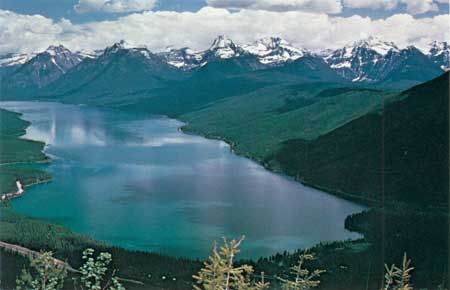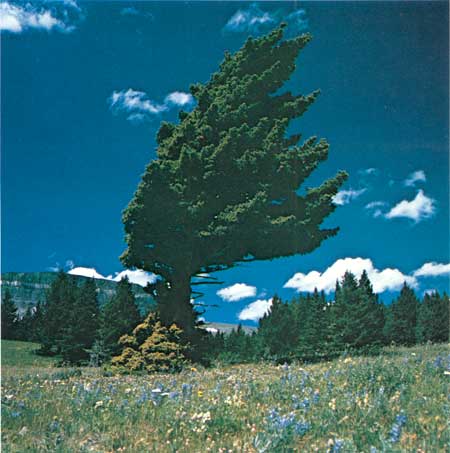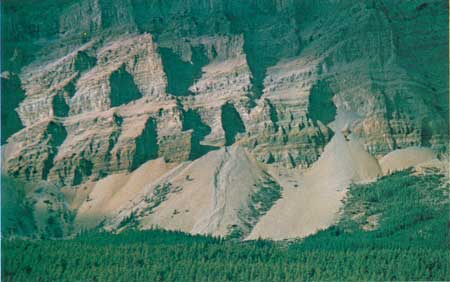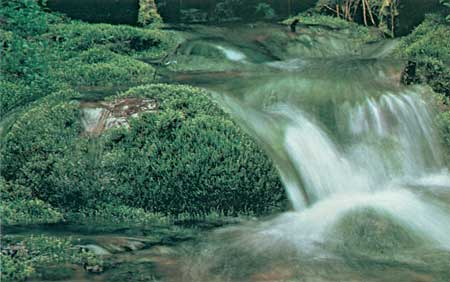
Lake McDonald, 16 kilometers long, 2 kilometers wide,
and 134 meters deep, is the largest lake in the park. Its basin is the
classic U-shaped glacial valley. Forested lateral moraines on either
shore gently rise 600 meters above lake level. Going-to-the-Sun Road
snakes along the eastern shore, and Logan Pass lies near the center of
the photograph, behind the peaks of the Lewis Range.
|

Subjected to the drying and shaping effects of wind both
winter and summer, this Douglas-fir, growing in the prairie community
near St. Mary, will attain neither the symmetrical shape nor the great
size of the Douglas-firs growing in moister, more sheltered sites on the
western slopes of the Continental Divide.
|

Freeze-and thaw cycles continually fracture and loosen
rocks along joints making them subject to removal by the actions of
water gravity and avalanche. The resulting fans of rock debris (talus
cones) indicate the extent of erosion since the withdrawal of the
Pleistocene glaciers.
|

Although moving water is an agent of erosion—the
primary destructive force of mountain masses—it also permits life.
Even small watercourses, such as this freshet, abound with plant and
invertebrate life.
|
|









